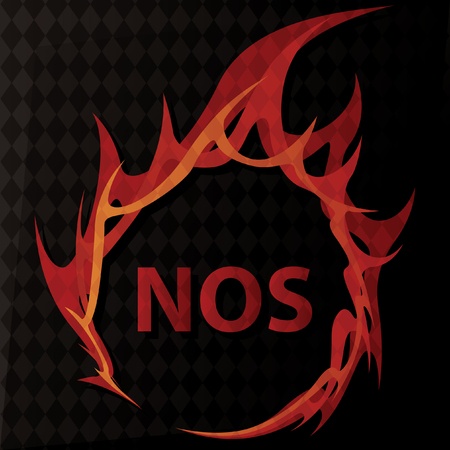
Laughing gas or nitrous oxide (N20) has a surprising variety of uses or effects. The World Health Organization lists it as an essential medicine because of its anesthetic and analgesic effects. It’s used as an oxidizer in rockets and motor racing to increase the power output of engines. N20 is also a major greenhouse gas, with a per unit mass impact that is between 265 and 310 times that of carbon dioxide. And it is in the top ten most popular recreational drugs globally.
The English chemist Joseph Priestley discovered nitrous oxide gas in 1772. Priestley is also known for his discovery of oxygen. Humphrey Davy experimented with N20 on himself and others in 1799. He coined the term ‘laughing gas’ after observing its effects on people who inhaled it. Although he reported its analgesic effects in 1800, this property was not tested or used for another 45 years. During that time, it was primarily a ‘party’ or entertainment drug.
A British dentist in 1845 was the first person to demonstrate the anesthetic properties of nitrous oxide. However, it was not widely used in dentistry until 1863. Gardner Quincy Colton and his partners opened a series of dental institutes using laughing gas. Within five years, they had performed a reported 75,000 extractions. A history of reported nitrous oxide users includes: Allen Ginsberg, Samuel Taylor Coleridge, Ken Kesey, Winston Churchill and William James.
In 1882 James published an article titled: “The Subjective Effects of Nitrous Oxide,” in the journal Mind. He said his use of N20 helped him develop a greater understanding of Hegel’s philosophy and he strongly urged his readers to repeat the experiment. “With me, as with every other person of whom I have heard, the keynote of the experience is the tremendously exciting sense of an intense metaphysical illumination.” Truth was almost blindingly obvious. “The mind sees all logical relations of being with an apparant subtlety and instantaniety to which its normal consciousness offers no parallel.”
But as he “sobered up,” the feeling faded. James was left with a few disjointed words and phrases—like staring at a black cinder left after the fire has gone out. James said he had sheet after sheet of phrases written during intoxication with N20 that to his sober mind seemed to be “meaningless drivel.” The most coherent and articulate sentence that came to him was the following: “There are no differences but differences of degree between different degrees of difference and no difference.”
In his later, seminal work, The Varieties of Religious Experience, James again reflected on the significance of intoxication by alcohol and anesthetics. He said the influence of alcohol over humanity was due to its power to stimulate the mystical faculties of human nature. Sobriety diminishes; drunkenness expands. “The drunken consciousness is one bit of the mystic consciousness and our total opinion of it must find its place in our opinion of that larger whole.”
Nitrous oxide, according to James, stimulated the mystical consciousness to an extraordinary degree. “Depth beyond depth of truth seems revealed to the inhaler.” But that truth fades as the individual sobered up. Nevertheless, a profound sense of meaning persisted. “I know more than one person who is persuaded that in the nitrous oxide trance we have a genuine metaphysical revelation.” He then went on to describe his own previous experiments with N20 described in his 1882 article.
In an article for The Atlantic, “The Nitrous Oxide Philosopher,” Dmitri Tymoczko noted how the experience James had with nitrous oxide remained with him throughout his life. He wrote a second article about it in 1898, “Consciousness Under Nitrous Oxide.” Then in his last essay, completed in 1910, he implied N20 had had an abiding influence on his thinking. Tymoczko thought N20 was a ‘passport’ for James to see religion from the believer’s perspective. “Drugs helped James to understand what religious belief was like from the inside.”
James’s experiences with nitrous oxide helped to crystallize some of the major tenets of his philosophy. His writings emphasize, for instance, the notion of pluralism, according to which “to the very last, there are various ‘points of view’ which the philosopher must distinguish in discussing the world.” Nitrous oxide had revealed in the most dramatic way possible the existence of alternate points of view.
Tymoczko used William James’s experience with nitrous oxide to argue how drugs can contribute to human well being; sometimes fulfilling an authentic religious need. He reasoned that drugs could allow even the most skeptical people to experience temporary periods of “pleasing falsehood,” dividing their life into periods of sober rationality and “ecstatic religious intoxication”, like William James. “Indeed, this is the real religious significance of drug use, from the Jamesian point of view–that it lets us choose, if only vaguely and temporarily, what to believe.”
He even referenced R. Gordon Wassson, who proposed that religion itself originated with drugs. According to Wasson, religion was a confused reaction to intense experiences provoked by the accidental ingestion of psychoactive plants. There have been examples where religious ritual has been entwined with the use of drugs. Some Native American cultures used psychedelic mushrooms in their rituals; and the Greek cult of Dionysus used wine to provoke visions. But Tymoczko went too far onto the magical mystery tour when he suggested that the use of wine by Christians could be a remnant of similar practices.
The Bible clearly puts the use of bread and wine within the context of a meal; not a mystical psychedelic religious rite. Tymoczko also failed to make a distinction made by James in The Varieties of Religious Experience that separated what James called institutional religion, like Christianity, from personal religion. James defined personal religion as “the feelings, acts, and experiences of [the] individual . . . in their solitude, so far as they apprehend themselves to stand in relation to whatever they may consider the divine.” James was looking at examples of personal religion, not institutional religion in The Varieties of Religious Experience. See “Spiritual, Not Religious Experience” for more on this distinction by James.
So now back to nitrous oxide. The significance of nitrous oxide to William James personally or to his philosophical and other writings has little to tell us about religious experience today. It may resonate with the increased interest in psychedelic drug rituals for therapeutic healing (See “Back to the Future with Psychedelics”). But before walking the path of Timothy Leary and Aldous Huxley, let’s take a look at what modern science tells us about N20—information that wasn’t available to James when he was doing his inhaling.
The Global Drug Survey, annually conducted by Adam Winstock and others, found that nitrous oxide was the seventh most popular drug in the world. More than 7% of the global survey respondents said they had used nitrous oxide in the past year. In the UK, it was used by 23.7% of respondents sometime over the past year. A recent article in the Journal of Psychopharmacology by Kaar et al., Winstock was a coauthor, indicated that the reported lifetime use of nitrous oxide for the UK and US was 38.6% and 29.4% respectively.
Most people using nitrous oxide recreationally do so infrequently without any serious side effects. But there is a subpopulation of heavy users. Quoted in an article for The Fix, Winstock said: “The majority of people who use it don’t use it very often, and only around 3% of heavy users say they have experienced negative health effects.” The Global Drug Survey found nitrous oxide use was associated with hallucinations (27.8%), confusion (23.9%), persistent numbness (4.3%) and accidental injury (1.2%). Accidental injury seems to be dose-dependent—injury is associated with higher numbers of ‘hits’ per session.
The pro-drug website, Erowid, has a ‘vault’ of information on nitrous oxide. Chronic exposure can effect reproduction in women. Immunological problems such as recurrent infections, decreased white blood cell counts and weakness have also been reported. There were also neurological issues with chronic N20 use.
A 1978 article in the British journal Lancet reported that a neurological disorder called myleneuropathy developed in 15 individuals with prolonged exposure to nitrous oxide. R.B. Layzer reported that: “The neurological picture is similar to that of subacute combined degeneration of the spinal cord, and it is possible that nitrous oxide interferes with the action of vitamin B12 in the nervous system.” A 1993 article by Flippo et al. in JAMA Surgery also described the dangers of neurologic degeneration from nitrous oxide. The abstract said:
Five cases (four from the literature and one new case) are presented in which patients unsuspected of having vitamin B12 deficiency developed subacute combined degeneration of the spinal cord following nitrous oxide anesthesia. Patients with vitamin B12 deficiency are exceedingly sensitive to neurologic deterioration following nitrous oxide anesthesia. If unrecognized, the neurologic deterioration becomes irreversible and may result in death.
Happily, some of these issues can be reversed. A 2003 article in the Wisconsin Medical Journal by Waclawik et al. described a case study of an individual who was a chronic nitrous oxide user whose neurological deficit was reversed after administering vitamin B12.
Sporadic use of N20 does not appear to be associated with serious health risks. But chronic exposure is another story. William James may have been influenced by experiences he had with nitrous oxide, just as Sigmund Freud’s use of cocaine shaped his psychoanalytic theories. N20 also fits with the current trend of looking for therapeutic healing or personal insight with psychedelics like LSD, ecstasy and even ayahuasca or ibogaine. But it is better suited as an anesthetic or analgesic in medical procedures; or an oxidizer in rocket engines than it is a doorway to religious experience.





